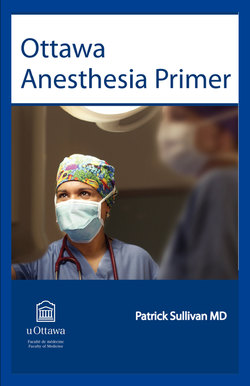Читать книгу Ottawa Anesthesia Primer - Patrick Sullivan - Страница 35
На сайте Литреса книга снята с продажи.
Proposed Plan for Anesthetic Technique:
ОглавлениеOnce the patient’s problems have been identified and evaluated, several questions need to be answered:
1. Is the patient’s condition optimal?
Is there sufficient time to optimize the patient? Patients who require emergency procedures may not have the benefit of time to optimize their comorbid conditions prior to surgery. If the patient is scheduled for elective surgery without optimization, the anesthesiologist must decide whether the surgery can proceed safely despite lack of optimization (low-risk surgery), or whether the surgery should be delayed for further investigations or perhaps cancelled.
2. Are there any problems that require further consultation or special tests?
Patients undergoing major surgical procedures with poorly defined comorbidities may require additional investigations or consultations to assess their perioperative risk and formulate an appropriate plan of management.
3. Is there an alternative procedure that may be associated with a lower perioperative risk?
This question is especially important to consider in the high-risk patient. For example, a surgeon may be unaware of significant anesthesia risks for a patient scheduled to undergo major surgery (e.g., radical cystectomy). After discussion with the team, a lower risk procedure may be deemed more appropriate (e.g., insertion of a suprapubic catheter for relief of urinary obstruction). In patients with significant comorbidities undergoing high-risk surgery, the anesthesia and surgical team may explore whether any alternative less-invasive surgical options are available.
4. What are the plans for postoperative management of the patient?
The majority of patients will require an initial period of monitoring in the post anesthesia care unit (PACU) following their procedure. They are subsequently returned to a hospital ward or discharged home. Patients with significant underlying diseases or those having major procedures may require postoperative care in a critical care unit. Supplemental oxygen therapy and analgesic plans should also be clearly defined. Analgesic options for the postoperative patient are discussed in Chapters 14 – 17.
5. Are blood products likely to be required?
The patient should be informed and consent obtained for possible blood product administration. The availability of blood products should be confirmed, and blood conservation strategies should be discussed with the OR team.
6. What premedication (if any) is appropriate? (See Chapter 4: Premedication)
Last but not least, the anesthetic technique must be planned. Options for anesthesia will include:
Monitored anesthetic care with local anesthesia with or without sedation.
Regional anesthesia with or without intraoperative sedation.
General anesthesia with or without tracheal intubation. If tracheal intubation is required, the anesthesiologist may choose to control ventilation of the lungs or allow the patient to breathe spontaneously. If controlled ventilation is used, the anesthesiologist may or may not use muscle relaxants.
Combined regional and general anesthetic.
A well-formulated anesthetic plan includes a plan for induction of anesthesia, maintenance of anesthesia, emergence, transport, and postoperative analgesia.
We encourage students to challenge themselves by performing a preoperative patient-specific assessment and formulating an appropriate anesthetic plan:
Complete the preoperative assessment
Develop an anesthetic plan for the patient you have assessed based on the proposed surgery.
Discuss your plan with the attending anesthesiologist and elicit their thoughts on your management plan and any alternative strategies they would suggest.
